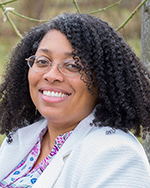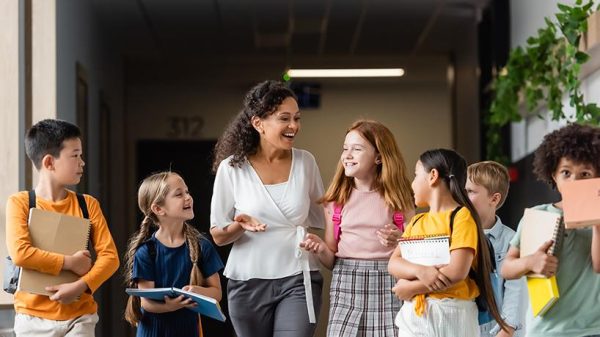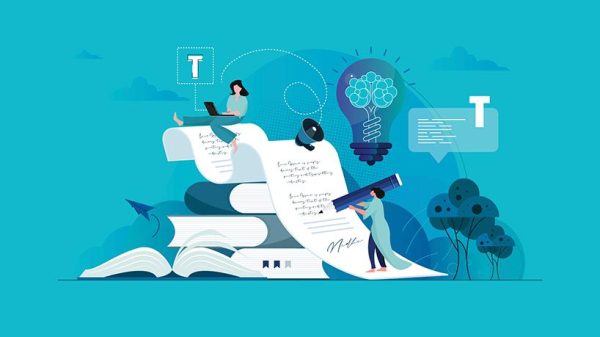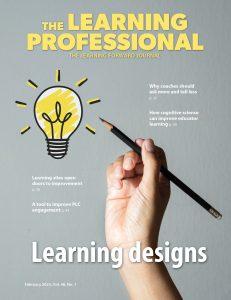Learners of all ages benefit greatly from trial-and-error practice. They expand their capacities and build confidence as they learn about what works and doesn’t. Yet despite the numerous, well-documented benefits of mistakes and corrective feedback in learning (Hattie & Timperley, 2007), taking intellectual risks is too often associated with anxiety, embarrassment, and other negative emotions. We have the opportunity to change that for the benefit of staff and students alike.
To do so, it is important to take the time to critically examine personal and professional beliefs about mistakes that we all bring to the work. Teacher responses in the classroom directly impact whether there is a positive and constructive error climate that positions mistakes as a pivotal element of learning (Soncini, Matteucci, & Butera, 2020; Steuer & Dresel, 2015). This is of particular concern in the early grades when students’ concepts of school and learning are first being developed, but it matters at all levels. Similarly, school and district leaders foster a climate that either encourages or discourages teachers from taking new risks and learning from mistakes.
Teacher responses in the classroom directly impact whether there is a positive and constructive error climate that positions mistakes as a pivotal element of learning. Share on XWhen thinking about how to help teachers and other staff become more skillful in their responses to mistakes, there are some specific actions that school leaders and coaches can take.
1) Take stock of the current error climate.
Before we can improve the approach to mistakes and feedback, we must consider the preconceived notions, habits, beliefs, and patterns of behavior that we all – school leaders, instructional coaches, and teachers – bring to the table. We can start by asking ourselves and our colleagues to think about our perceptions of mistakes:
- What comes to mind when you think of the word mistake?
- What is the greatest mistake you have made as a learner? How did you respond?
- What was your reaction the last time you received critical feedback from a colleague or supervisor?
- Are there particular content areas or skills that you feel sensitive about when it comes to making mistakes?
Taking a little time, even 15-20 minutes, to weigh questions like these can help us unpack attitudes and start to discern ways they might connect to daily practices.
2) Strive to lead with curiosity rather than with an emphasis on correctness.
Whether it is providing feedback to teachers on their pedagogical moves or helping an educator determine how to support a child’s progress, leaders should emphasize the process of learning rather than simply landing at the “right” answer or performance. Many educators are familiar with the concept of fostering a growth mindset (Dweck, 2009) and have a goal of helping learners of all levels embrace the notion that their intelligence can expand through effort and practice, and with corrective feedback. But it is important that educators get concrete about the micro-level actions that comprise our approaches to trial-and-error learning.
To create educational spaces in which effort is valued, teachers and school leaders must be okay with learners not being correct or demonstrating “top” performance at all times. We must remember that this applies to teachers as well as students. Leaders, instead of looking for teachers to demonstrate the perfect lesson, work product, or classroom observation, appreciate the great gift that mistakes provide, prompting wondering, curiosity, and puzzling through challenges toward incremental self-improvement. Orient learners toward trial-and-error practice–with the expectation of errors when trying something new–rather than rushing too soon to the demonstration of mastery. Highlight and reward the process rather than just the end result. With time, community norms and interpersonal interactions will evolve so that curiosity and effort are rewarded more enthusiastically, and those norms will carry over to classrooms and students.
3) Support the habit of regular professional reflection.
Maintaining space for teachers and school leaders to engage in self-examination, reflection, and peer-to-peer conversations can help them understand the extent to which their small actions and words shape the error climates of their classrooms. Here are three specific ways to enact this practice:
- Collect data. Engage in regular individual self-study and data collection through the use of a journal focused on day-to-day experiences with mistakes and feedback. Brief entries can be handwritten, typed, or even captured through a dictation app. Try using the following as a repeated prompt: Tell the story of a mistake that you observed today. How did the person respond to their own mistake (actions, words, perceived emotions)? How did I respond? What about these responses feels like it can support learning? What feels constricting or discouraging? What might I do differently in the future?
- Discuss with others. After taking time for personal reflection and consideration of patterns of behavior, emotions, and instruction from a few days or weeks of data, share these personal observations in a school community setting where there is trust. This can occur in a mentor-mentee check-in, professional learning community session, or staff meeting. Sharing specific stories–the details of which are often lost in the hustle and bustle of daily life–can invite discussion and build connection among community members. Generously listening and asking questions from a place of curiosity rather than critique can create a safe environment for individuals to consider ways to improve going forward.
- Observe approaches teachers use in other settings. The actions and words that educators employ around mistakes can vary widely depending on the teacher’s individual experiences and beliefs, as well as the resources, standards, and expectations of the school setting. Visiting classrooms and reading about mistake-related practices in real-world school contexts can spark fresh ideas and inspire greater intentionality. You can also find narratives in blogs, academic journal articles, or books (e.g., Donaldson, 2021).
Student and teacher responses to mistakes are embedded in subtle interpersonal interactions. Beliefs about the value of mistakes are conveyed through verbal statements, as well as body language, tone of voice, reward and evaluation systems, and more. With reflection that is anchored in focused observation and future practice, we can more deliberately interact with learners, colleagues, and leaders in ways that lift up mistakes and feedback as valuable assets to learning.
References
Donaldson, M. (2021). From oops to aha: Portraits of learning from mistakes in Kindergarten. Rowman & Littlefield.
Dweck, C. (2009). Mindset: The new psychology of success. Random House.
Hattie, J., & Timperley, H. (2007). The power of feedback. Review of Educational Research, 77(1), 81-112. https://doi.org/10.3102/003465430298487
Soncini, A., Matteucci, M. C., & Butera, F. (2020). Error handling in the classroom: an experimental study of teachers’ strategies to foster positive error climate. European Journal of Psychology of Education, 1-20. https://doi.org/10.1007/s10212-020-00494-1
Steuer, G., & Dresel, M. (2015). A constructive error climate as an element of effective learning environments. Psychological Test and Assessment Modeling, 57(2), 262-275.









